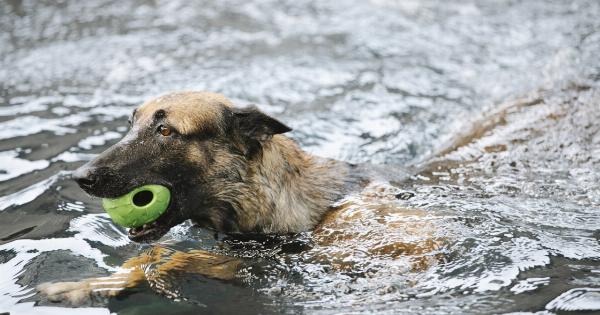Humans and dogs have shared a special bond for thousands of years. It is a unique relationship that goes beyond mere companionship. Dogs are loyal, loving, and have become known as “man’s best friend”.
But where did this extraordinary bond originate? Let’s delve into the history of the human-canine bond.
The Domestication of Dogs
The story of the human-canine bond begins with the domestication of dogs. Experts believe that dogs evolved from wolves tens of thousands of years ago.
The exact timeline and location of this domestication process are a subject of ongoing research, but it is widely accepted that it happened in several regions simultaneously.
Early humans likely befriended wolves, perhaps attracted by their hunting prowess or their ability to alert the group to potential danger.
Over time, these mutual relationships developed and the wolves slowly adapted to become more comfortable around humans. Those wolves with a few genetic mutations that made them more sociable and less aggressive towards humans were likely more successful in forming partnerships with early humans.
As humans settled in one place and began forming agricultural communities, dogs played an essential role. They provided protection from predators, helped with hunting and herding, and offered companionship to the people living in these communities.
Dogs in Ancient Cultures
Throughout history, dogs have held a significant place in various ancient cultures. In Ancient Egypt, for example, dogs were revered and considered sacred.
They were even mummified and buried alongside their human companions, with the belief that they would continue to protect their owners in the afterlife.
In Ancient Greece, dogs were highly regarded for their loyalty and were often depicted in artwork. The poet Homer, in his famous epic poems like The Odyssey and The Iliad, frequently mentioned the bond between humans and their canine companions.
Similarly, ancient Chinese culture also held dogs in high regard. They were believed to bring good luck, and their loyalty and protective nature made them coveted pets and symbols of prosperity.
The Evolution of Dogs as Pets
As civilization progressed, so did the role of dogs in society. Dogs gradually transitioned from working animals to cherished pets.
The Industrial Revolution played a significant role in this transition, as it led to a shift from agriculture-based lifestyles to urbanization.
With more people living in cities and working long hours away from home, dogs became valued companions. They provided emotional support and became beloved family members, filling the void of loneliness and offering unwavering loyalty.
In the late 1800s and early 1900s, selective breeding became popular, leading to the creation of various dog breeds.
This era marked a turning point in the human-canine bond, as dogs started to be bred for specific purposes, such as hunting, guarding, or simply being adorable companions.
Today, dogs serve a multitude of roles in society. They are therapy dogs, assistance dogs for people with disabilities, search and rescue dogs, and, of course, cherished pets.
Their intelligence, agility, and ability to form deep connections with humans have made them indispensable in many areas of human life.
The Science Behind the Bond
Science has been exploring the extraordinary bond between humans and dogs to understand its origins and effects. Researchers have discovered that interacting with dogs has numerous positive effects on human well-being.
When humans interact with dogs, their bodies release oxytocin, a hormone often referred to as the “love hormone.” Oxytocin not only promotes bonding but also helps reduce stress levels and lowers blood pressure.
Additionally, owning a dog has been linked to improved cardiovascular health and overall psychological well-being.
Another fascinating aspect of the human-canine bond is the mutual understanding dogs and humans have developed. Dogs are particularly adept at reading human social cues, such as pointing or gaze direction.
This ability has earned them the title of “social intelligence” experts among animals.
Furthermore, studies have shown that dogs have evolved unique muscles around their eyes, allowing them to imitate human facial expressions.
This capability strengthens the emotional bond between humans and dogs, as we perceive them as empathetic companions.
The human-canine bond is not only limited to the physical and emotional realm. Dogs have been trained to perform incredible tasks, such as detecting diseases like cancer and even predicting seizures in people with epilepsy.
Their extraordinary abilities continue to astound researchers, strengthening the bond between humans and dogs even further.
The Future of the Human-Canine Bond
The human-canine bond is stronger than ever and continues to evolve. With scientific advancements, such as gene sequencing and genome editing, researchers are uncovering more about the genetic basis of the bond.
This knowledge could lead to a deeper understanding of the bond’s origins and potentially enhance it further.
The future might also bring advancements in dog-human communication. Scientists are working on developing devices that can interpret dog barks or body language, enabling better communication between humans and dogs.
Such innovations could revolutionize various fields, including search and rescue missions and dog training.
As we delve deeper into the human-canine bond, it becomes clear that this connection is more than just a product of convenience or mutual benefit. Dogs have evolved with us, adapted to our needs, and become our trusted friends.
The origins of this bond may remain shrouded in the mists of time, but the unbreakable connection between humans and canines is undeniable.






























